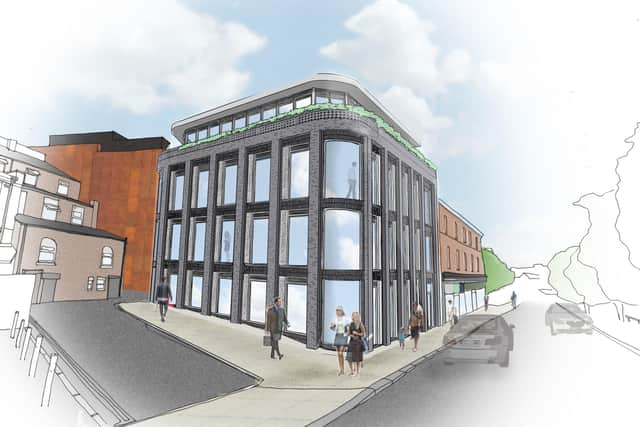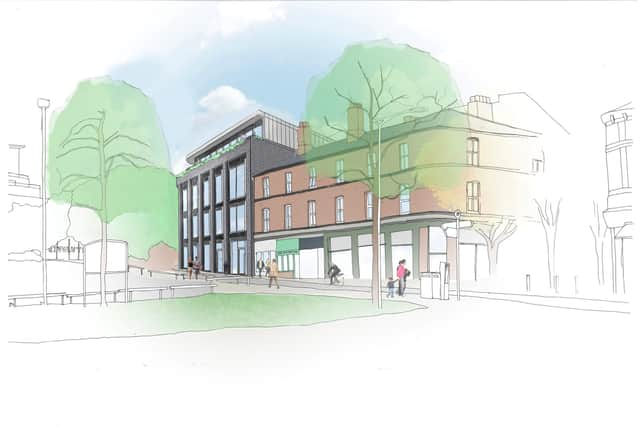New plan revealed for site of Sheffield’s lost Devonshire Street shop Rare & Racy
and live on Freeview channel 276
The four-storey block would be built on Devonshire Street in the city centre, taking the place of a row of terraces that used to be three shops.
One of the retail units housed Rare & Racy, which opened in 1969 and sold second-hand books, music and art for almost 50 years – its closure came after the council gave the go-ahead in March 2015 to demolish the shops and create a fresh development.
Advertisement
Hide AdAdvertisement
Hide AdThe original proposal sparked an impassioned protest that drew national attention. A petition was signed by thousands and there were demonstrations outside the Town Hall, while Pulp frontman Jarvis Cocker said Rare & Racy was a ‘global treasure’ that it would be a ‘crime to destroy’, likening its loss to the legend that claims Britain will fall if ravens leave the Tower of London.
The independent bookshop, run by co-owner Allen Capes, shut for good in 2017 when its lease expired, and the shops either side moved elsewhere. The scheme approved in 2015 involved demolishing the premises and putting up a new retail unit, a restaurant and flats.
Primesite UK, the Sheffield-based firm behind the project, still owns the buildings and land on Devonshire Street. The new proposals have been designed by Cartwright Pickard Architects, while the Sheffield company Urbana Town Planning is acting as consultant.
In a planning statement lodged with the council, Urbana says the scheme ‘utilises the whole site’, including empty land behind the vacant shops off Westhill Lane.
Advertisement
Hide AdAdvertisement
Hide Ad“The primary elevation of Devonshire Street will feature large, floor-to-ceiling windows on all floors,” the statement says.


"This ties into the existing floor heights of the adjacent block.”
But the firm adds: “Given the planning history of the site, the demolition of the existing buildings is expected to play a large role, especially in the eyes of the public. However, though the previous permission the demolition of the existing buildings has already been established.”
The development is initially described in the application as an ‘office building’, but Urbana explains the block will be categorised as ‘Class E’, a new way of defining usage under planning rules which could ‘encompass anything from a café to a shop to an office’. The building would provide 1,123 sq m of commercial space, Urbana says – it would be constructed in grey brick with a terrace on the top floor offering views of Devonshire Green.


Advertisement
Hide AdAdvertisement
Hide AdAdam Murray, Urbana’s managing director, said in May this year: “The initial proposal for the site did not come forward as Primesite had a number of developments at the time and others took priority.”
The council faced enormous pressure to reject the original scheme, on the grounds that part of Sheffield’s heritage would be lost. In 2015 Leigh Bramall, then the authority’s cabinet member for business, skills and development, said councillors’ hands were tied by ‘stringent planning laws’.
Officers will review the latest application before a decision is reached.